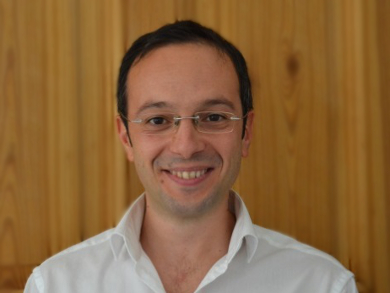Dr. Davide Esposito, Max Planck Institute of Colloids and Interfaces, Potsdam, Germany, and his team work in the field of sustainability and develop depolymerization strategies for lignocellulose, a highly abundant waste product from the pulp- and paper industry.
Dr. Esposito talks to Cordula Buse, Deputy Editor, ChemBioEng Reviews, about his recently published article. He and his team review opportunities and limitations for the preparation of bio-based aromatic building blocks from lignin and discuss biomass fractionation methods as well as catalytic depolymerization strategies.
Dr. Esposito, your team is interested in the development of new strategies for the use of sustainable feedstocks, especially upgrading lignocellulosic biomass. Could you please explain the aim of your research?
The world economy is dominated by a linear growth model: make, use, dispose. It is characterized by an addictive dependence on fossil resources for the production of fuels, chemicals, and materials. As a result, the environment has been seriously compromised by our unsustainable society. Our research focuses on sustainability and aims at contributing solutions for creating new chemicals and materials using renewable feedstocks.
Lignocellulosic biomass is a perfect example of a renewable raw material: the organic molecules that compose the lignocellulose structure, essentially polysaccharides and lignin, are the products of photosynthesis and originate from carbon dioxide fixation. Therefore, the refinement of biomass has the potential of generating chemicals with a favorable carbon footprint. Unlike molecules derived from oil, which possess few chemical functional groups, biomass features a diverse selection of functionalities that can be used for the preparation of innovative chemical products.
Since lignocellulose can be isolated as the waste of different production chains, e.g., food residues or agricultural waste, the upgrade of this form of biomass can be performed in an environmentally friendly way, avoiding conflicts with food markets and loss of biodiversity. As a consequence, it offers incredible possibilities in terms of recycling and circular economy schemes.
How did you become interested in biorefinery and sustainable chemistry and why do you focus on lignocellulose?
Chemists have often been associated with creating pollution, but the green chemistry revolution initiated in the 1990s has changed this perception. I was initially trained as a synthetic chemist, and over time, I became more and more interested in green and sustainable chemistry, stimulated by the serious environmental problems that affect our modern society.
Biorefining intrinsically adopts several principles of green chemistry as a guiding philosophy, including the use of catalytic processes and the utilization of renewable feedstocks. Why lignocellulose? Well, because it is renewable and available on a scale of billions of metric tons per year. Waste biomass is accessible everywhere on the planet, unlike oil and other fossil resources. The latter ones are dependent on very complicated geopolitical equilibria; biomass is not an exclusive product!
What are you currently working on?
Among other things, we are working on the depolymerization of different lignin matrices via hydrogenolysis, using a new nanostructured catalyst that we have recently synthesized on the basis of nickel and titanium nitride.
Which part of your work is the most challenging?
Achieving the deconstruction of lignin into building blocks with high selectivity is a remarkable challenge, considering the high heterogeneity of the raw feedstock. In addition, the development of smart and cheap strategies for the separation of the aromatic monomers obtained by lignin decomposition is a further challenging aspect of our research.
What is the broader impact of your ChemBioEng Reviews article for the scientific community?
Lignin is the most abundant source of renewable aromatic molecules on the planet. These bio-macromolecules are mostly produced at the commercial scale as a by-product of the pulp and paper industry. Unfortunately, such compounds are generally regarded as waste and used for combustion. Recently, the scientific community has been able to develop a number of strategies for the controlled deconstruction of lignin, which could lead to the procurement of high value bio-based aromatic small molecules. This article reviews the most recent advances in this direction.
What will be the next steps on your journey?
Producing value-added products using the primary building blocks we can obtain from biomass. Our long-term goal is to reach the point where we can convert different waste biomass into items and goods useful for society.
Are there any other topics your research group is investigating?
We are also focusing on other aspects of biorefinery. A very important topic is the development of catalysts and novel catalytic methodology. Moreover, we are interested in green synthetic processes based on bio-based building blocks, for the preparation of value-added chemicals and materials.
Thank you for the interview!
- Lignin Refinery: Towards the Preparation of Renewable Aromatic Building Blocks,
Micaela Graglia, Narasimharao Kanna, Davide Esposito,
ChemBioEng Rev. 2015, 2, 377–392.
DOI: 10.1002/cben.201500019




